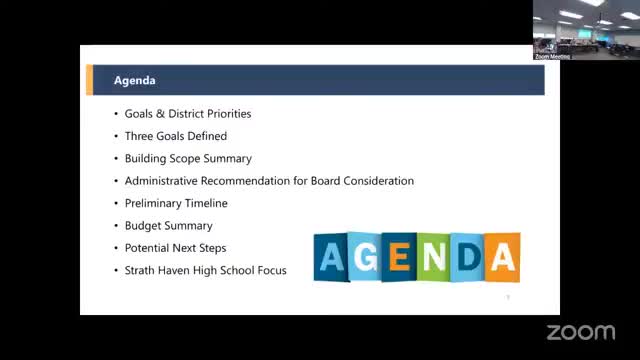
This article was created by AI using a video recording of the meeting. It summarizes the key points discussed, but for full details and context, please refer to the video of the full meeting. Link to Full Meeting
The committee identified three primary goals for the district's infrastructure: maintaining a secure and conducive learning environment, right-sizing school buildings to match enrollment projections, and addressing educational program needs. These goals are part of a broader, multi-year plan that seeks to enhance the quality of education by improving the physical conditions of school facilities.
A significant focus of the meeting was on the importance of maintaining essential building systems, such as HVAC, plumbing, and electrical systems, which are often hidden but crucial for student performance. The committee highlighted that improvements in indoor air quality and overall building conditions can lead to better educational outcomes, including reduced allergens and improved learning environments.
Enrollment projections were also a critical topic, with the district anticipating a 2% increase in student numbers over the next five years. This projection necessitates careful planning to ensure that school capacities align with the expected growth. The committee noted that recent updates indicated higher utilization rates in several schools, prompting discussions about potential adjustments to accommodate the increasing student population.
In addition to the core goals, the committee acknowledged the need to consider other infrastructure priorities, such as renovations to the high school auditorium and cafeteria, which, while not part of the primary goals, are essential for enhancing the overall educational experience.
The financial implications of the proposed 10-year plan were also discussed, with an estimated cost of approximately $164 million. The committee emphasized the importance of a structured capital plan to guide funding decisions and project prioritization, ensuring that financial resources are allocated effectively over time.
As the district moves forward, the committee plans to present a proposal to the board that outlines these goals and priorities, with an emphasis on continuous evaluation and adjustment based on actual enrollment and educational needs. The discussions from this meeting underscore the district's commitment to improving its facilities and ensuring that they meet the evolving demands of education in the coming years.
Converted from Facilities & Finance Committee meeting 6/11/25 meeting on June 13, 2025
Link to Full Meeting
Comments
View full meeting
This article is based on a recent meeting—watch the full video and explore the complete transcript for deeper insights into the discussion.
View full meeting

